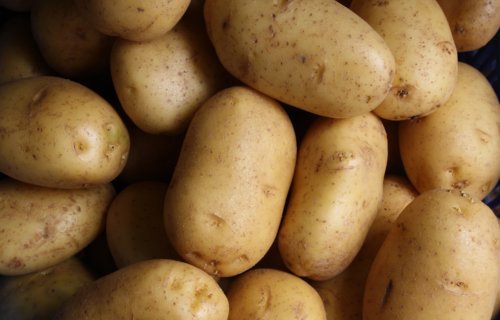WASHINGTON — The humble potato could hold the key to beating hospital superbugs, according to a recent study. Scientists say it contains a natural antibiotic drug that destroys lethal bacteria.
The compound, called solanimycin, combats a host of fungi that wreak havoc on fruit, vegetables, and cereals. In experiments, it killed Candida albicans that causes thrush in women.
The discovery opens the door to curing life-threatening infections and saving farmers millions of pounds of produce. Microbes found in soil produce most modern antibiotics. Solanimycin suggests plant-based microorganisms are worth a closer look. Staple crops are developing resistance to existing treatments.
“We have to look more expansively across much more of the microbial populations available to us,” says lead author Dr. Rita Monson, a microbiologist at the University of Cambridge, in a media release.
What is solanimycin?
Solanimycin is produced by a pathogenic bacterium called Dickeya solani. It causes “blackleg” in potatoes. The severe infection rots the tasty tuber, leading to up to a fifth of crops being wiped out.
Solanimycin could be a “gamechanger” in the war on antimicrobial resistance, one of the biggest public health threats facing humanity. By 2050, antibiotic-resistant infections like MRSA (methicillin-resistant staphylococcus aureus) and C. diff (clostridium difficile) could claim 10 million lives each year, according to estimates.
The international team found D. solani also produces an antibiotic known as oocydin A, which is highly active against multiple fungal plant pathogens.
“These strains emerged rapidly, and now they are widely distributed,” says co-author Dr. Miguel Matilla of the Spanish Research Council.
When the team silenced the genes that produce oocydin A, the bacterium continued to show antifungal activity. It led to the identification of solanimycin and the gene clusters responsible for the proteins that make the compound. Analysis showed the bacterium uses it sparingly, in response to cell density. An acidic environment – like a potato’s – also activates them.
Dr. Monson likens it to a “clever protective mechanism.”
“It’s an antifungal that we believe that will work by killing fungal competitors, and the bacteria benefit so much from this,” the researcher explains. “But you don’t turn it on unless you’re in a potato.”
Can new drugs prevent an era of antibiotic-resistance?
The researchers have begun collaborating with chemists to learn more about the molecular structure of solanimycin and better understand how it works. Scientists would then have to test it in plant and animal models.
“Our future steps are focused on trying to use this antibiotic antifungal for plant protection,” Dr. Matilla says.
Study authors hope plant pathogens such as D. solani could become a source for making compounds that fight against diseases in plants and people. The heyday of antibiotic discovery was in the 1950s and 1960s. The last one that made it into doctors’ hands dates back to 1987. Microbes have since become very resistant.
The list of bacteria that are becoming resistant to treatment with all available antibiotic options is growing. Few new drugs are in the pipeline, creating a pressing need for new classes. There is wide concern the world is cruising into a “post-antibiotic” era.
It could leave many common infections untreatable and make many staples of modern medicine – including surgery, chemotherapy, and organ transplants – impossible.
“We have to open to the exploration of everything that’s out there to find new antibiotics,” Dr. Matilla concludes.
The study is published in the journal mBio.
South West News Service writer Mark Waghorn contributed to this report.

